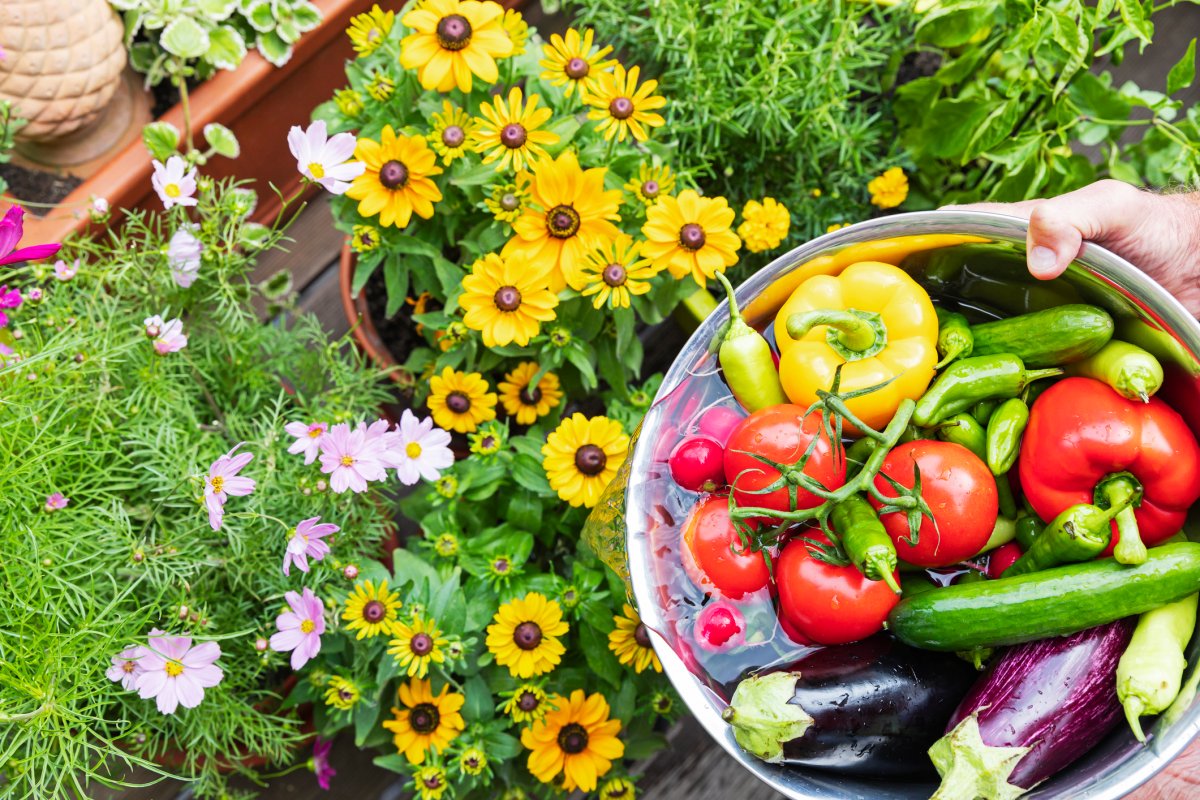

We may earn revenue from the products available on this page and participate in affiliate programs. Learn More ›
When you put so much love and energy into your vegetable garden, you want to do everything possible to ensure that the plants thrive so you can enjoy the tasty produce that sprouts up. Some annual flowers are known to help vegetables flourish by enriching the soil, attracting pollinators like bees and butterflies, or keeping away pests.
Much like enhancing a vegetable garden with a planned garden layout and companion planting (adding other plants to benefit the ones you are trying to grow) these annuals are some of the best flowers for vegetable gardens.
Borage (Borago officinalis)

Start with a plant that doubles as an edible. Borage is a natural-looking plant that produces star-shaped pink or blue flowers that attract bees and other pollinators. The flowers and leaves are edible, and the leaves have a refreshing, cucumber-like flavor for use in salads and lemonade. The plant grows best in full to partial sun and grown in rich, moist, well-draining soil. Borage helps repel tomato hornworm, cabbage moth, and cabbage worm, so it is a great companion plant for tomatoes, squash, and cabbage. Finally, its thick roots help aerate the soil and add organic matter to the garden.
Best For: Cottage vegetable gardens that get full to partial sun and include tomatoes, squash, and cabbage.
Our Recommendation: White/Blue Borage Seeds at Amazon for $5.99.
Non-GMO borage seeds produce both blue and white varieties of these edible flowers, which can be harvested after 50 to 60 days.
Calendula (Calendula officinalis)
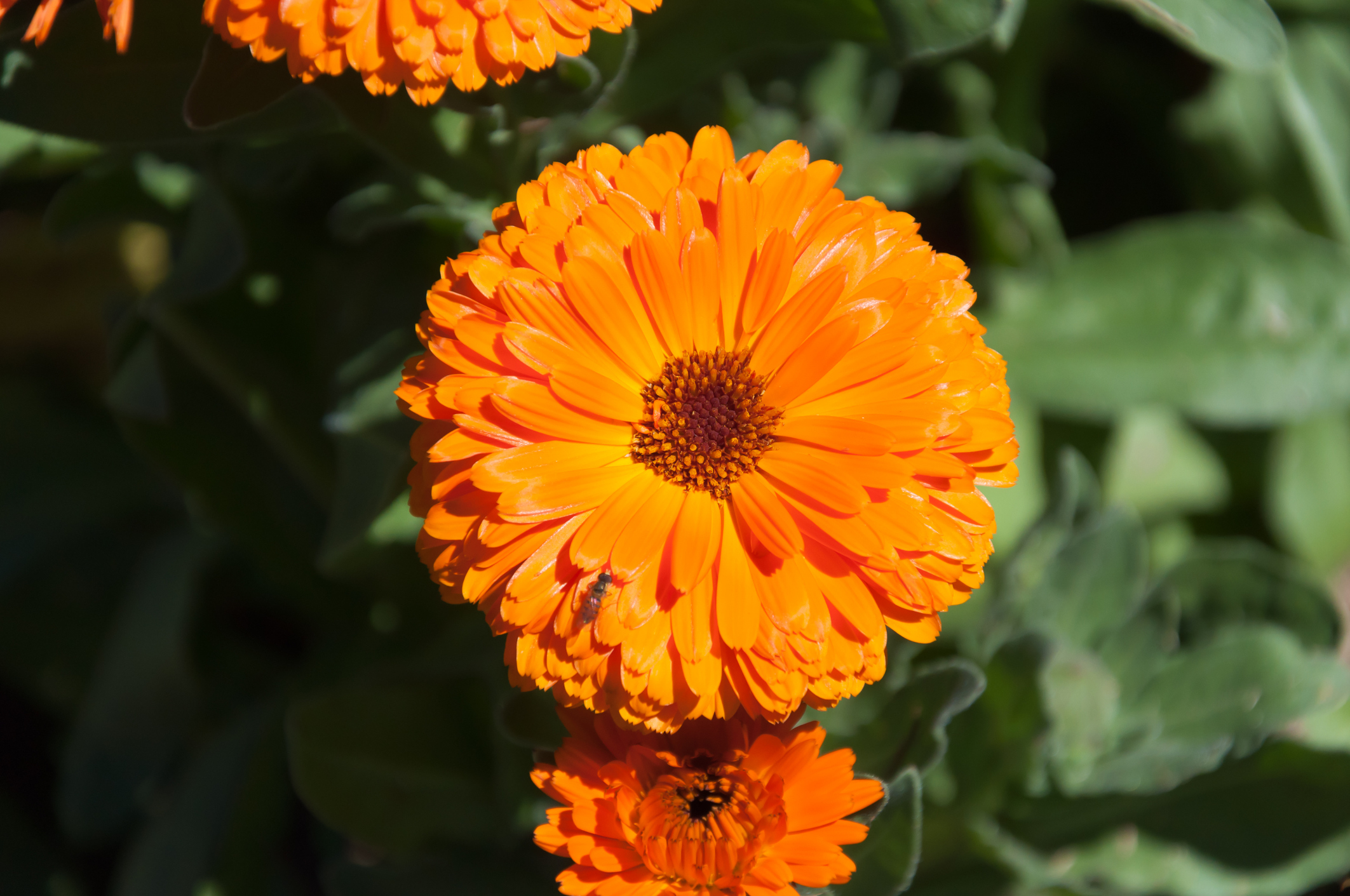
Resembling marigolds and often referred to as “pot marigolds,” calendula plants are actually herbs known for their antifungal and antimicrobial properties that repel insect pests like asparagus beetles and tomato hornworms. Their aromatic orange and yellow flowers also attract bees. They thrive in full sun and can grow up to 14 inches tall. It is helpful to plant calendula near almost any type of vegetable in your garden.
Best For: Attracting bees in a vegetable garden that receives full sun.
Our Recommendation: Gardeners Basics, Calendula Seeds at Amazon for $4.85.
These seeds include a mix of calendula to produce yellow, golden, and orange flowers that attract pollinators and deter some pests.
Marigold (Tagetes spp.)
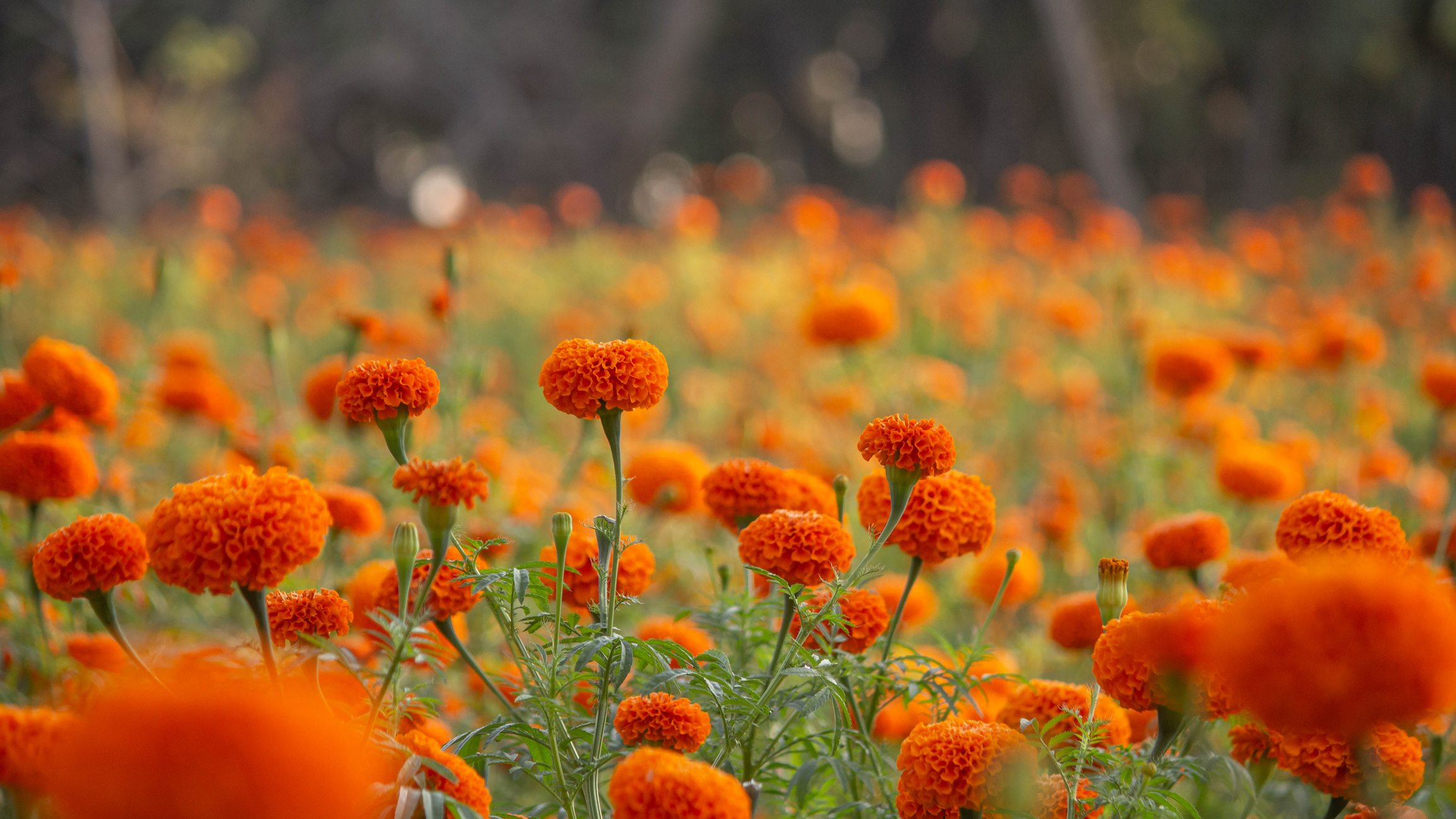
Marigolds are beloved for their cheerful clusters of bright yellow, orange, or red flowers. They contain a natural insect repellent called pyrethrin that keeps all kinds of insects away, including mosquitoes, nematodes, aphids, thrips, squash bugs, tomato hornworms, whiteflies, Mexican bean beetles, and spider mites. Therefore, marigolds are great companion plants for tomatoes, beans, cucumbers, squash, potatoes, and eggplant. Marigolds prefer full sun and well-draining soil.
Best For: Brightening up a garden while repelling insects that harm tomato plants and other vegetables.
Our Recommendation: The Old Farmer’s Almanac Marigold Seeds at Amazon for $6.49.
These non-GMO calendula seeds produce brilliant orange, yellow, and red flower clusters that love sun and heat and are drought-tolerant.
Nasturtium (Tropaeolum majus)
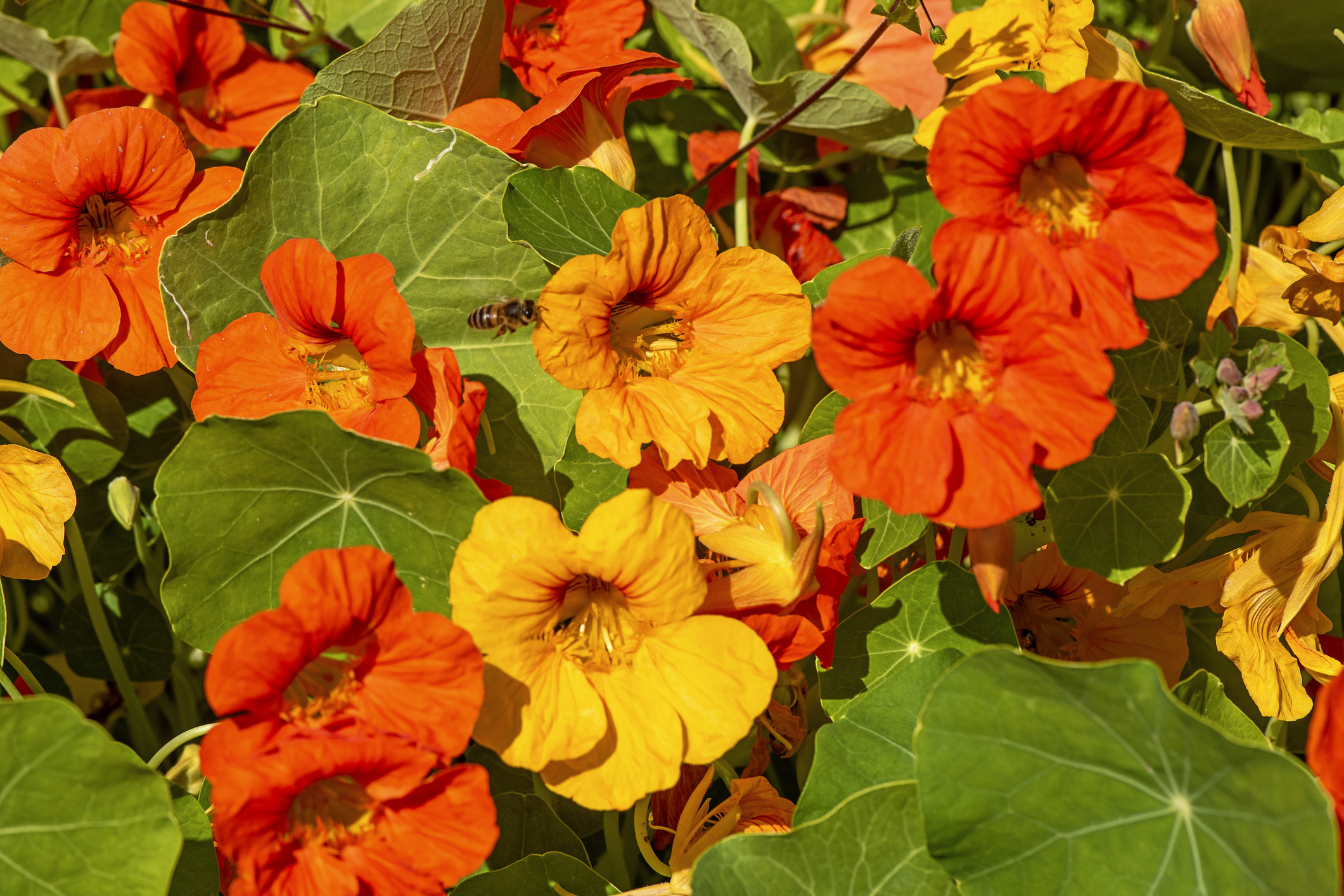
Derived from the common name that means “nose-twister,” nasturtiums are attractive tunnel-shaped flowers that come in red, orange, yellow, and cream colors. They are known to be an effective companion plant for radishes, Brussels sprouts, winter squash, cabbage, broccoli, and kale.
The flowers release an airborne chemical that many insects dislike the taste of, such as cabbage worms, aphids, squash bugs, beetles, and whiteflies. However, you can enjoy the delicious edible flowers and leaves that have a peppery taste and a boost of vitamin C. Nasturtiums also attract pollinators like butterflies and hummingbirds. These plants grow well in full sun to partial shade and slightly acidic, well-draining soil.
Best For: Attracting beneficial insects and pollinators, and repelling pests.
Our Recommendation: Double Dwarf Jewel Mix Nasturtium Seeds at Burpee for $4.95.
This seed pack contains a mix of nasturtiums with 2- to 3-inch flowers in shades of red, orange, and yellow on plants that reach a height of 10 to 12 inches.
Petunia (Petunia spp.)
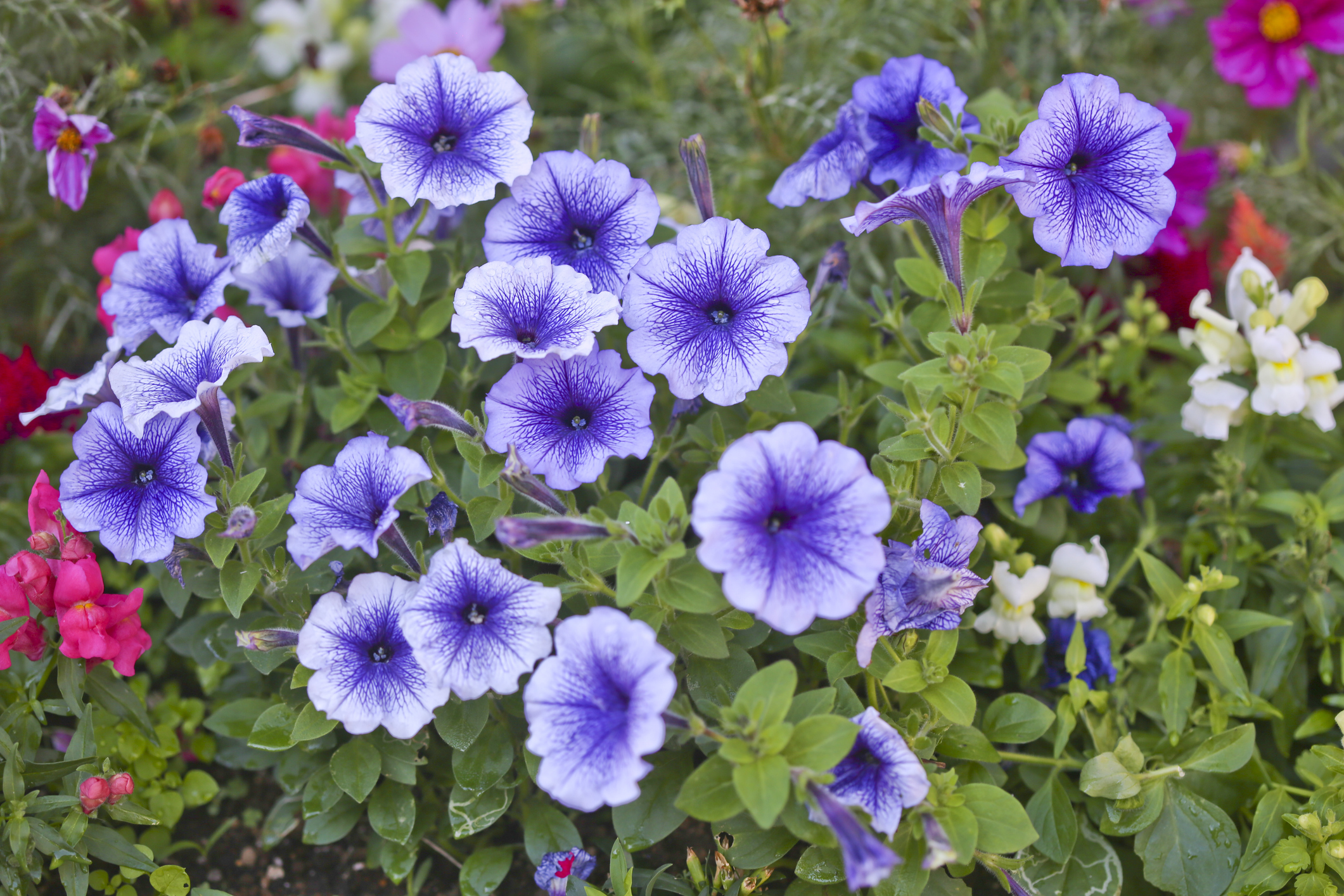
With wide trumpet-shaped blossoms in pink, purple, yellow, red, orange, green, and white hues, petunias are an attractive and useful flower in any vegetable garden. Their beauty and sweet scent attracts butterflies, bees, and hummingbirds. What’s more, they catch a variety of insects like Japanese beetles, Mexican bean beetles, aphids, asparagus beetles, squash bugs, and leafhoppers with their sticky hairs. These fast-growing annuals prefer full sun to partial shade and soil that drains well and is moist and acidic. Plant them in gardens with beans, tomatoes, squash, potatoes, corn, peas, onions, and/or asparagus.
Best For: Attracting hummingbirds and other pollinators, and deterring a variety of insects that attack garden vegetables.
Our Recommendation: Mixed Rainbow Color Petunia Seeds at Amazon for $9.99.
This packet contains a variety of easy-to-grow seeds that produce mixed colors of fragrant petunias that are attractive to butterflies, bees, and various birds.
Sunflowers (Helianthus annuus)
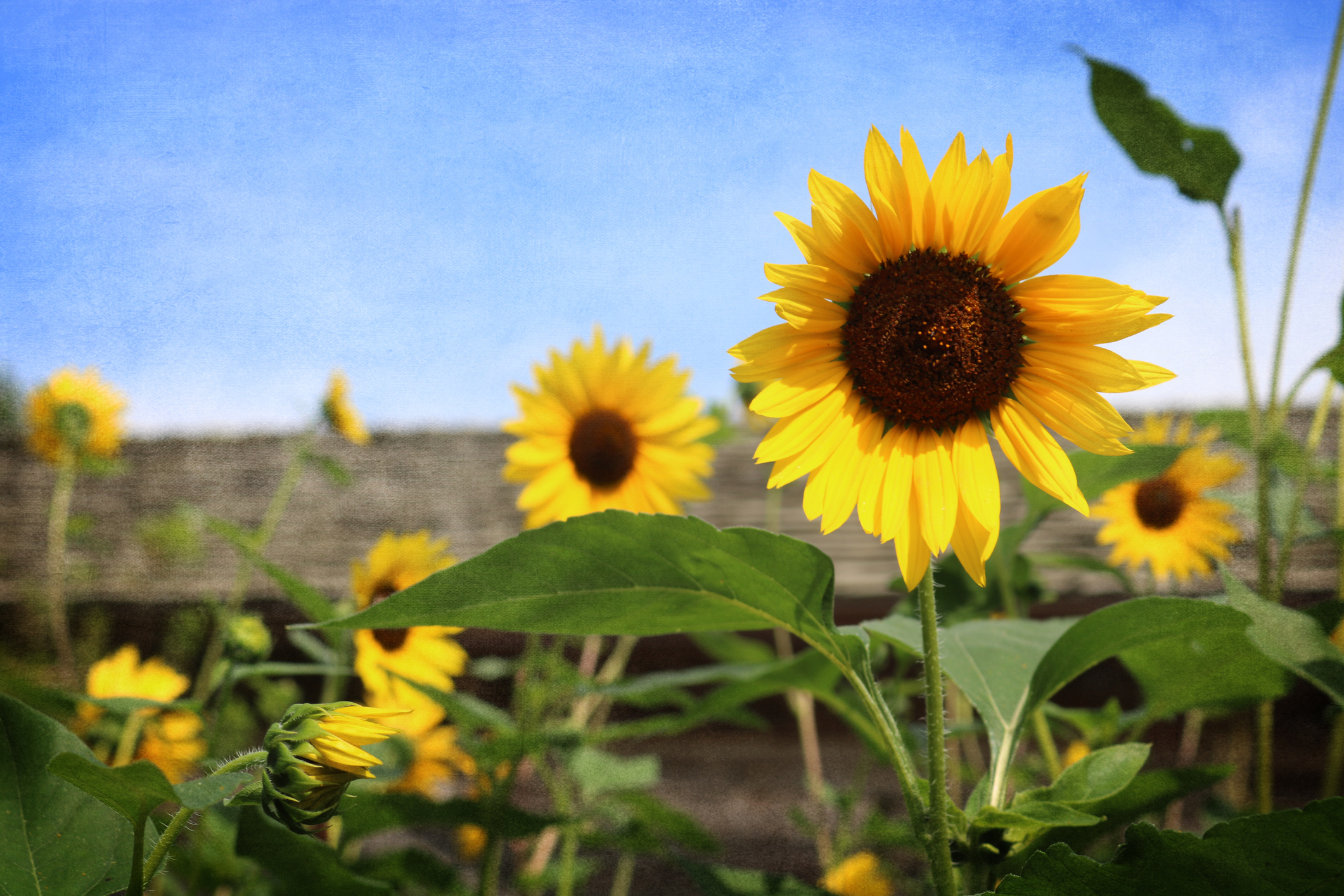
Sunflowers are the quintessential cheerful flower, given their bright orange-yellow petals that look like sunshine rays. Their height and large blossoms help attract pollinators, especially butterflies and bees, to your garden. Sunflowers flourish in full sun and moist, well-draining soil. They can grow up to around 10 feet tall, so just be sure to plant them so they don’t block the sun from reaching vegetable plants. Sunflowers make excellent companion plants for cucumbers, radishes, onion, tomatoes, corn, and squash. Finally, they are effective in improving the soil since their root structure reduces soil compaction but helps hold the soil together. It can also remove heavy metals—like lead, arsenic, zinc, chromium, cadmium, copper, and manganese—from the soil.
Best For: Attracting pollinators, brightening your yard, and enriching the soil.
Our Recommendation: Seed Needs 500+ Sunflower Seeds for Planting ‘The Original Crazy Blend’ at Amazon for $6.99.
Crazy Sunflower Blend includes more than 15 varieties in colors like orange, red, and yellow, as well as some bicolors, that will be great for attracting butterflies and other pollinators.
